#InternationalRespectForChickensDay
Explore tagged Tumblr posts
Text

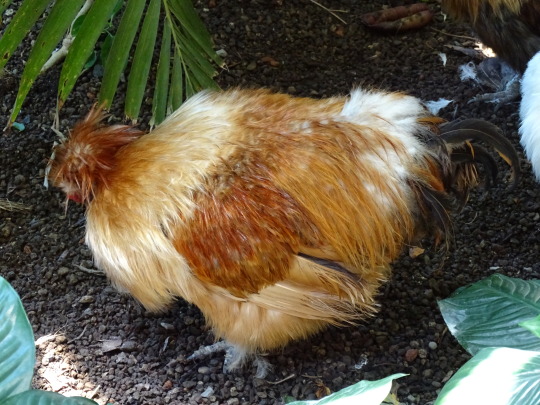
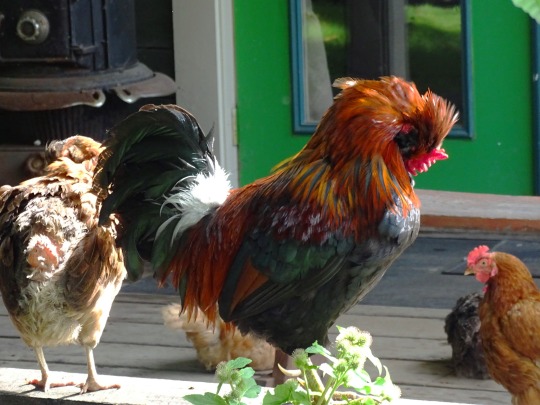


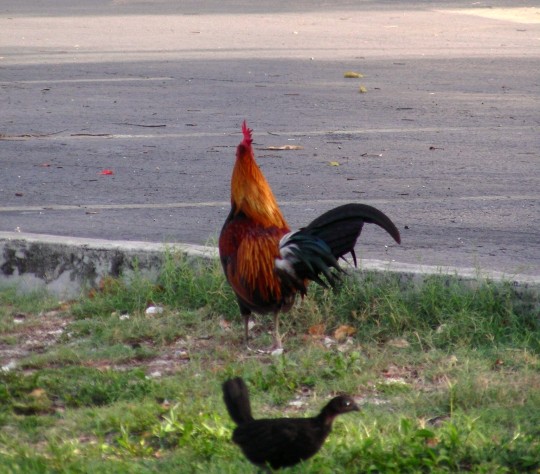
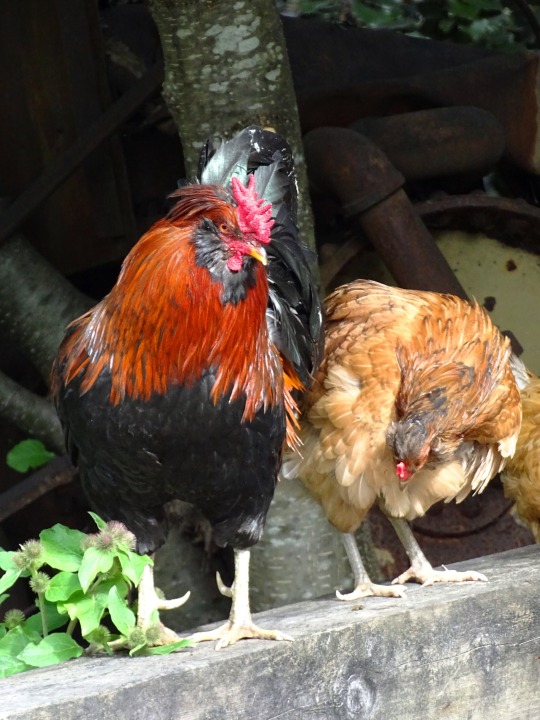
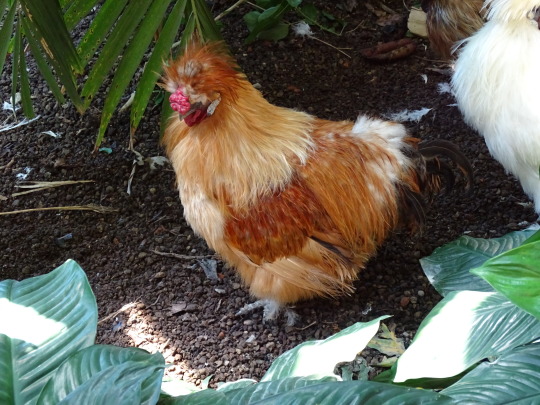

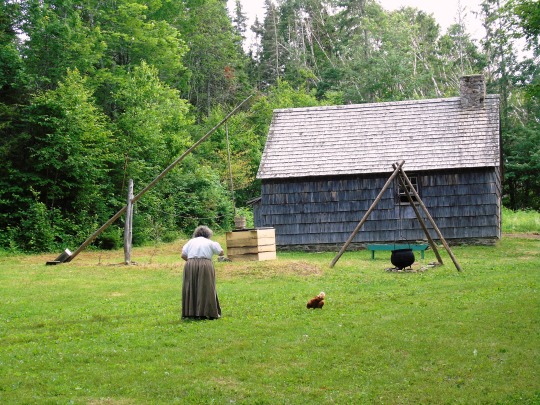


International Respect for Chickens Day
International Respect for Chickens Day exists “to celebrate chickens throughout the world and protest the bleakness of their lives in farming operations.” On the day, actions are to be done “to highlight the life and suffering of chickens and encourage compassion for them.” The day was started by the United Poultry Concerns in 2005. Karen Davis, the founder of the group, believes that chickens should be returned to an outside environment and that they shouldn’t be eaten. The idea for the day stemmed from Harry Shearer—the host of Le Show and Simpsons voice contributor—who had proclaimed May 14, 2000, as National Respect the Chicken Day. It was Mother’s Day, and he wanted to point out that hens are symbols of devoted motherhood.
Chickens are the most prevalent bird species; there are about 25 billion in the world. There are also dozens of breeds. The chicken is a subspecies of, and largely descended from, the red junglefowl, which is native to Asia. To a lesser extent, the chicken can also trace its lineage to the grey junglefowl. A baby chicken is a chick, young female chickens are pullets, female chickens old enough to lay eggs are hens, young male chickens are called cockerels, and full-grown male chickens are called cocks or roosters.
Chickens are likely domesticated more than any other fowl and are raised for both their meat and eggs. First domesticated in India and Southeast Asia, they were used in cockfights and for religious reasons, not for food. They began appearing on farms a few thousand years ago, but it wasn’t until the early twentieth century that they began being viewed differently, and eggs and meat became mass-produced commodities. High-volume poultry farms began appearing in Britain around 1920 and in America following World War II.
Hens and pullets are raised for meat and eggs. At first, eggs were the main focus, and only hens that couldn’t produce any more eggs were killed for food; now female chickens of any age are killed for meat. Males are used for breeding, but some young males—cockerels—are castrated (often chemically) and used for food; they are then known as capons. In the mid-twentieth century, meat surpassed eggs as the primary use of chickens. The meat industry has since continued to grow. Chicken meat is often used as pet food as well as for human consumption.
Chickens themselves are omnivores; they eat seeds, but also eat insects, lizards, and mice. When food is present, roosters may do some tidbitting: they make food calls and move their heads up and down while picking up and dropping pieces of the food. Research has shown that hens prefer roosters who do tidbitting more often. Groups of chickens create a social hierarchy. There is usually a dominant male, a few less-dominant males, and a few females. A pecking order is formed, and higher ranking males may strike out against lower ranking males, literally pecking them with their beaks. There is a pecking order with females as well.
Hens may mate with many different roosters. Interestingly, they may eject sperm and are more likely to do so if the rooster is lower on the pecking order. Chickens breed in the spring and summer months when the longer daylight hours stimulate egg-laying. Artificial lighting in chicken coops can influence hens to lay eggs year-round. The time between ovulation and egg-laying is between 23 and 26 hours, and chickens can ovulate an hour after laying an egg. So, it is possible for some hens to lay about 300 eggs a year. Chicks hatch about 21 days after eggs are laid. Free-range chickens may live up to six to eight years, while most chickens in the poultry industry only live two to three years—they lay eggs for a few years and are then slaughtered. The longest a chicken may live is about 30 years.
How to Observe
According to United Poultry Concerns, an “action” of compassion is to be done for chickens today. Posters, as well as brochures and handouts, can be acquired from United Poultry Concerns, and they suggest the following ideas on how to celebrate the day:
Hand out leaflets on a street corner.
Set up a table with information about chickens somewhere in public.
Have an office party dedicated to the topic.
Have a celebration of chickens in a classroom.
Write a letter to the editor of a local publication.
Call in to a radio program.
Host a vegan open house.
Talk to friends, family members, and strangers about what can be done to help chickens.
Some other ideas on how to celebrate the day could include:
Watch a documentary such as Food, Inc. or Dirty Birds: A Story of Chickens in America.
Watch Chicken Run.
Read about the different breeds of chickens.
Read a book about the chicken industry such as Big Chicken: The Incredible Story of How Antibiotics Created Modern Agriculture and Changed the Way the World Eats or Chicken: The Dangerous Transformation of America’s Favorite Food.
Read Prisoned Chickens Poisoned Eggs: An Inside Look at the Modern Poultry Industry, a book by Karen Davis, the founder of United Poultry Concerns.
Join United Poultry Concerns.
Source
#Stewart#British Columbia#summer 2023#Canada#Silkie#International Respect for Chickens Day#Zoo Zürich#bird#animal#Zurich#InternationalRespectForChickensDay#4 May#original photography#flora#fauna#Kings Landing Historical Settlement#New Brunswick#Brahma chicken#Key West Chicken#USA#Florida#Schweiz#Switzerland#day trip#travel#vacation#outdoors#tourist attraction
0 notes
Text
International Respect for Chickens Day Messages & Wishes

International Respect for Chickens Day Messages, wishes, Chicken quotes, status and greetings to wish your dear ones on Facebook, WhatsApp and Instagram.
#RespectforChickensDay#RespectforChickensDayWishes#RespectforChickensDayMessages#InternationalRespectforChickensDay#RespectforChickensDaystatus
0 notes
Text
For #InternationalRespectForChickensDay 🐓:

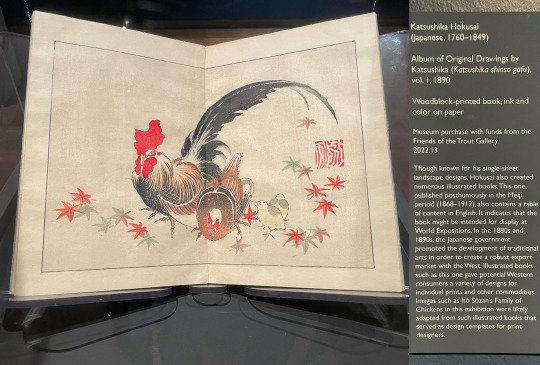
Two pieces from The Trout Gallery of Dickinson College’s “Memory and Modernity: Modern Japanese Woodblock Prints of the Natural World” show (2023):
1. Ito Sözan (1884-19??)
Family of Chickens, c.1910s
2. Katsushika Hokusai (1760-1849)
Katsushika shinso gafu, Vol. 1, 1890
#animals in art#animal holiday#20th century art#museum visit#19th century art#bird#birds#birds in art#Japanese art#East Asian art#Asian art#print#woodblock print#ukiyo e#Hokusai#Trout Gallery#exhibition#chicken#chickens#International Respect for Chickens Day#Ito Sözan
25 notes
·
View notes
Photo
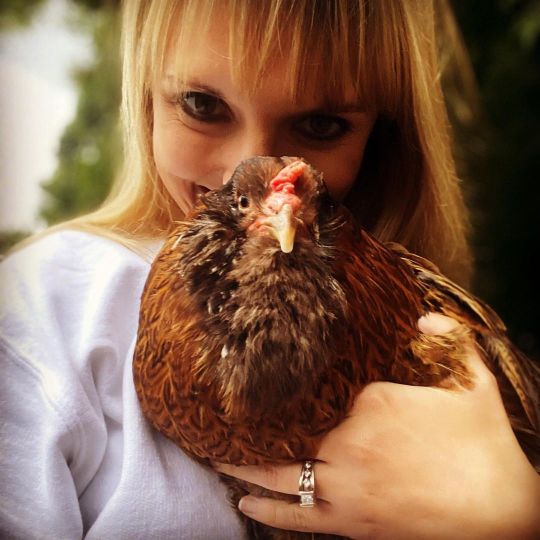
Today is #internationalrespectforchickensday and yes this is really a thing! As it should be because chickens are some of the most grossly abused beings on the planet and deserve so much more kindness and respect than they get. Here are some easy ways to offer your respect to chickens: 1. Don’t eat them. Duh. Chickens don’t like to be eaten! 2. Choose to adopt adult chickens instead of buying babies from feed stores. These chicks come from hatcheries and are “sexed” at days old. The male chicks are ground up alive, and any that are misidentified as female are typically killed or abandoned once grown because most people are not zoned for roosters. The female chicks are shipped by mail like merchandise to feed stores, with the weaker ones placed around the edges as “packing material.” Buying chicks supports these practices. 3. Choose plant-based alternatives to eggs. Chickens in the egg industry (even free-range farms) suffer greatly and are treated like commodities. They are painfully debeaked, forced to live in crowded, filthy conditions, and have been bred by humans to over-produce eggs (therefore having a myriad of health issues). Organic farms can’t use any medication to treat sick hens either due to losing their “organic” status. Hens are usually gassed at 1.5-2 years old when they are no longer lucrative to the industry. This is a fraction of their lifespan which is naturally around 7-10 years. 4. View them differently. Chickens are often portrayed as stupid in movies and TV (think the lovable but dumb Hei Hei in Moana). Portraying animals as stupid creates a disconnect that makes eating them easier for many people. Chickens, just like other birds, are wonderful parents, lovingly caring for their babies and even talking to them in the eggs (chickens in hatcheries never meet their parents). They can solve simple puzzles, learn their names, and have complex language and social structures. They are amazing animals and undervalued by humans. Our chickens here at @blackberrycreek are like family, and we hope one day all chickens will know freedom, kindness, and respect. Photo: Co-founder @_mother_of_chickens and Cheeks (her favorite) a rescued blind hen. (at Blackberry Creek Farm Animal Sanctuary) https://www.instagram.com/p/COeKs1YsgYZ/?igshid=dy0cej20v0f4
0 notes
Photo
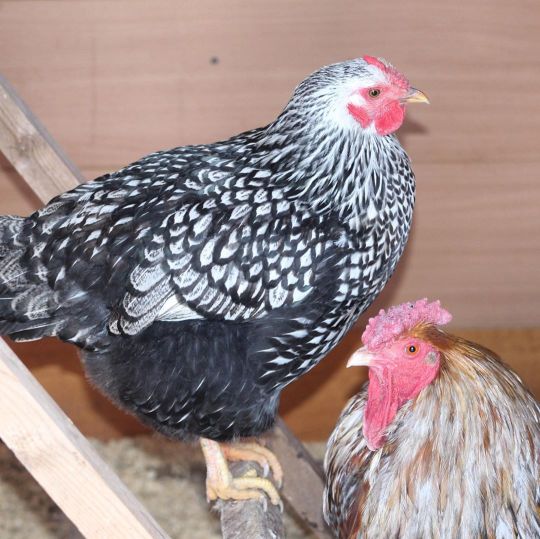
It is #internationalrespectforchickensday @soulspacesanctuary #someonenotsomething #friendsnotfood (at SoulSpace Farm Sanctuary) https://www.instagram.com/p/B_yStbXF1k4/?igshid=15vm3ygroxemw
0 notes
Photo
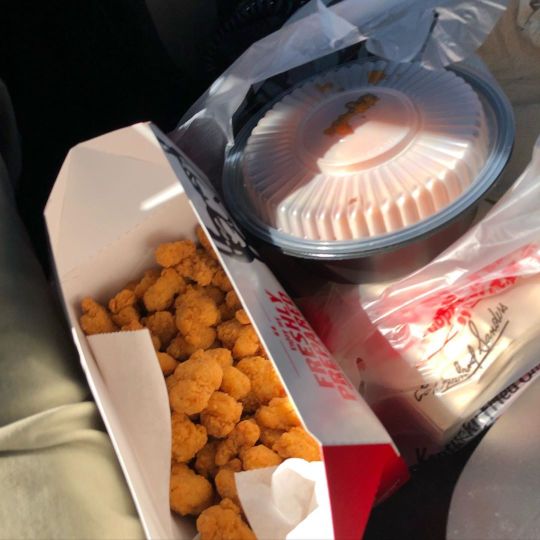
I am definitely respectful and appreciative!! @kfc #internationalrespectforchickensday #birdday (at KFC) https://www.instagram.com/p/B_x7E42p7cSQ3uBgjty4nLCVwwnbvwDWizk24o0/?igshid=mhe8bbzhxxtt
0 notes
Photo
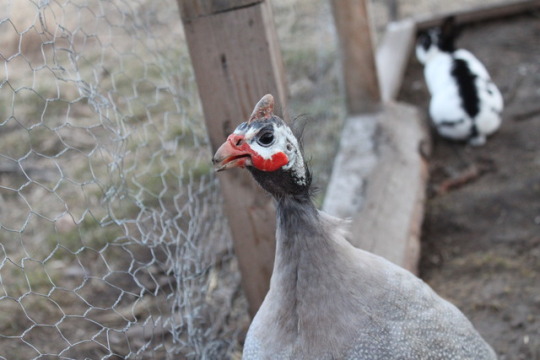
the lavender queen demands an international respect for guineas day :D
happy international respect for chickens day friends!!
#friends#pets#animals#love#peace#joy#health#happiness#be happy#lavenderqueen#guinea#guinea fowl#chickens#chicken#bird#internationalrespectforchickensday#chickenday#I love#vegan#cruelty free
93 notes
·
View notes
Photo
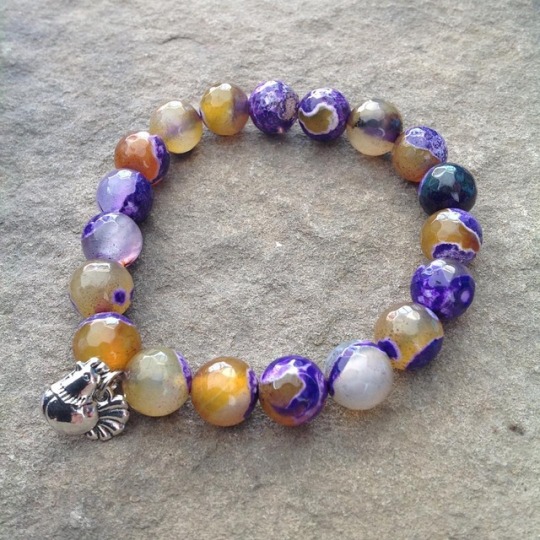
Happy #internationalrespectforchickensday !!! 🐓🐓🐓 Buy any of our chicken charm bracelets and 65% goes to @_animalplace so they can care for more chickens. 💕🙏🏼🐓 #animalplace #chickens #chickenrescue #lovechickensdonteatthem #lovechickensdontstealtheireggs ☮💕🌱#jewelry #healingcrystals #veganbags #handmade #gifts #woodstock #woodstockreveries #animalsarenotfabric #vegan #shopsmall #giftsforvegans #giftsthatgiveback #bossbabe #womenagainstdairy #peaceloveandvegan Shop online at woodstockreveries.com
#lovechickensdonteatthem#healingcrystals#womenagainstdairy#animalsarenotfabric#chickenrescue#internationalrespectforchickensday#lovechickensdontstealtheireggs#animalplace#chickens#veganbags#gifts#peaceloveandvegan#handmade#vegan#woodstock#jewelry#giftsthatgiveback#shopsmall#woodstockreveries#giftsforvegans#bossbabe
0 notes
Text
Resharing for #InternationalRespectForChickensDay 🐓
It’s #InternationalRespectForChickensDay 🐓 so here some roosters from the The Walters Art Museum’s Arts Across Asia exhibition!

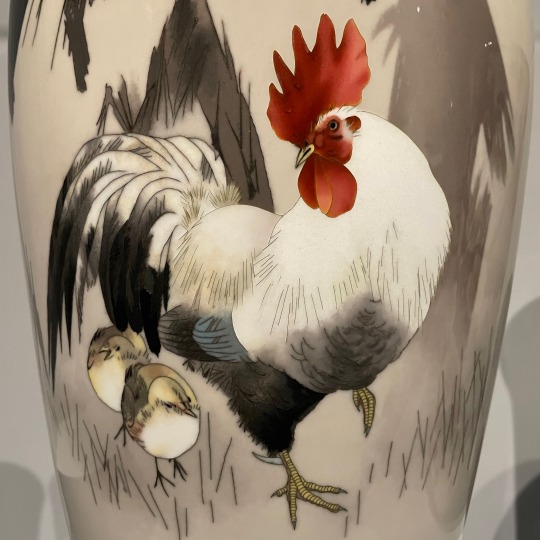

Namikawa Sosuke (1847-1910) Vase with Rooster, Hen, and Chicks among Banana Plants Japan (Tokyo), early 20th century copper, gold-copper alloy (shakudö), silver, gold, enamel Walters Art Museum
“Beginning in the 1880s, Japanese cloisonné artists developed wireless cloisonné (musen shippo), a technique for which Namikawa Sosuke was renowned. This vase shows no traces of the metal wires that initially outlined the animals and plants. The effect was achieved by taking off the metal wires before each of the three firings, resulting in a cloisonné design that the artist intended to look like a painting.”


Kutani Shozo (1816-1883) Kutani: Dish with Roosters Under Cherry Tree Japan, c. 1876 porcelain, overglaze enamel, gilding Walters Art Museum
“By the second half of the 19th century, Kutani ceramics, such as this dish, began to be exported. The Kutani style of this period is marked by a heavy reliance on red and the use of gold, an opulent effect that undoubtedly appealed to foreign tastes.”
22 notes
·
View notes
Photo
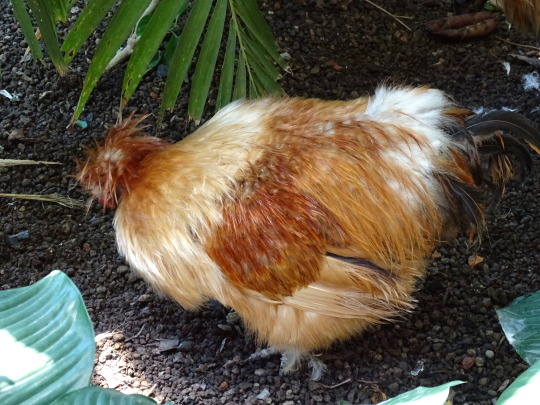


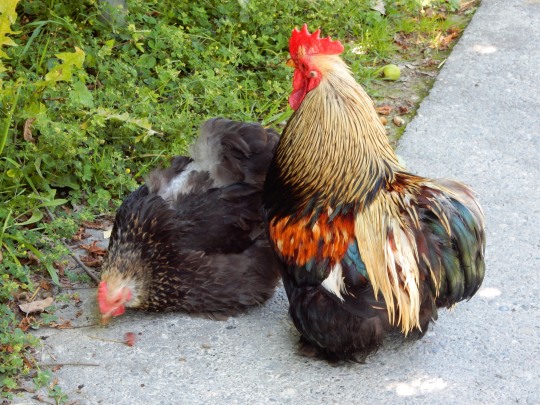
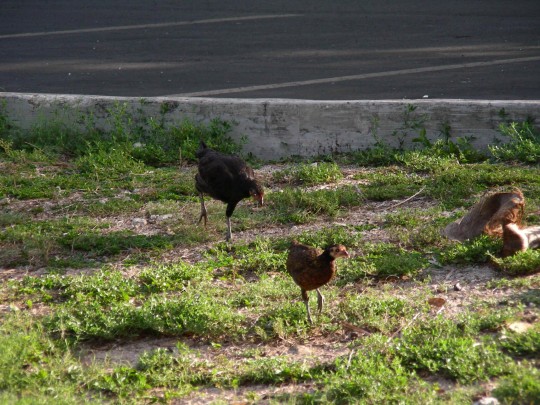
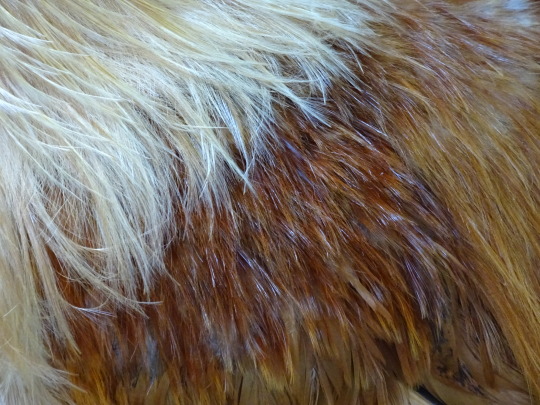

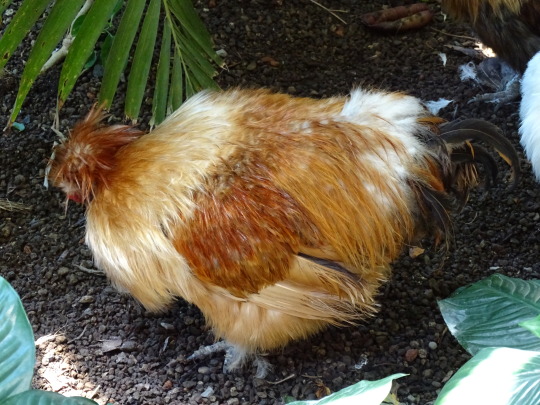


International Respect for Chickens Day
International Respect for Chickens Day exists “to celebrate chickens throughout the world and protest the bleakness of their lives in farming operations.” On the day, actions are to be done “to highlight the life and suffering of chickens and encourage compassion for them.” The day was started by the United Poultry Concerns in 2005. Karen Davis, the founder of the group, believes that chickens should be returned to an outside environment and that they shouldn’t be eaten. The idea for the day stemmed from Harry Shearer—the host of Le Show and Simpsons voice contributor—who had proclaimed May 14, 2000, as National Respect the Chicken Day. It was Mother’s Day, and he wanted to point out that hens are symbols of devoted motherhood.
Chickens are the most prevalent bird species; there are about 25 billion in the world. There are also dozens of breeds. The chicken is a subspecies of, and largely descended from, the red junglefowl, which is native to Asia. To a lesser extent, the chicken can also trace its lineage to the grey junglefowl. A baby chicken is a chick, young female chickens are pullets, female chickens old enough to lay eggs are hens, young male chickens are called cockerels, and full-grown male chickens are called cocks or roosters.
Chickens are likely domesticated more than any other fowl and are raised for both their meat and eggs. First domesticated in India and Southeast Asia, they were used in cockfights and for religious reasons, not for food. They began appearing on farms a few thousand years ago, but it wasn’t until the early twentieth century that they began being viewed differently, and eggs and meat became mass-produced commodities. High-volume poultry farms began appearing in Britain around 1920 and in America following World War II.
Hens and pullets are raised for meat and eggs. At first, eggs were the main focus, and only hens that couldn’t produce any more eggs were killed for food; now female chickens of any age are killed for meat. Males are used for breeding, but some young males—cockerels—are castrated (often chemically) and used for food; they are then known as capons. In the mid-twentieth century, meat surpassed eggs as the primary use of chickens. The meat industry has since continued to grow. Chicken meat is often used as pet food as well as for human consumption.
Chickens themselves are omnivores; they eat seeds, but also eat insects, lizards, and mice. When food is present, roosters may do some tidbitting: they make food calls and move their heads up and down while picking up and dropping pieces of the food. Research has shown that hens prefer roosters who do tidbitting more often. Groups of chickens create a social hierarchy. There is usually a dominant male, a few less-dominant males, and a few females. A pecking order is formed, and higher ranking males may strike out against lower ranking males, literally pecking them with their beaks. There is a pecking order with females as well.
Hens may mate with many different roosters. Interestingly, they may eject sperm and are more likely to do so if the rooster is lower on the pecking order. Chickens breed in the spring and summer months when the longer daylight hours stimulate egg-laying. Artificial lighting in chicken coops can influence hens to lay eggs year-round. The time between ovulation and egg-laying is between 23 and 26 hours, and chickens can ovulate an hour after laying an egg. So, it is possible for some hens to lay about 300 eggs a year. Chicks hatch about 21 days after eggs are laid. Free-range chickens may live up to six to eight years, while most chickens in the poultry industry only live two to three years—they lay eggs for a few years and are then slaughtered. The longest a chicken may live is about 30 years.
How to Observe
According to United Poultry Concerns, an “action” of compassion is to be done for chickens today. Posters, as well as brochures and handouts, can be acquired from United Poultry Concerns, and they suggest the following ideas on how to celebrate the day:
Hand out leaflets on a street corner.
Set up a table with information about chickens somewhere in public.
Have an office party dedicated to the topic.
Have a celebration of chickens in a classroom.
Write a letter to the editor of a local publication.
Call in to a radio program.
Host a vegan open house.
Talk to friends, family members, and strangers about what can be done to help chickens.
Some other ideas on how to celebrate the day could include:
Watch a documentary such as Food, Inc. or Dirty Birds: A Story of Chickens in America.
Watch Chicken Run.
Read about the different breeds of chickens.
Read a book about the chicken industry such as Big Chicken: The Incredible Story of How Antibiotics Created Modern Agriculture and Changed the Way the World Eats or Chicken: The Dangerous Transformation of America’s Favorite Food.
Read Prisoned Chickens Poisoned Eggs: An Inside Look at the Modern Poultry Industry, a book by Karen Davis, the founder of United Poultry Concerns.
Join United Poultry Concerns.
Source
#Silkie#International Respect for Chickens Day#Zoo Zürich#bird#animal#Zurich#InternationalRespectForChickensDay#4 May#original photography#flora#fauna#Kings Landing Historical Settlement#New Brunswick#Canada#Brahma chicken#Key West Chicken#USA#Florida#Schweiz#Switzerland#feather#daytrip#travel#vacation#outdoors
1 note
·
View note
Photo
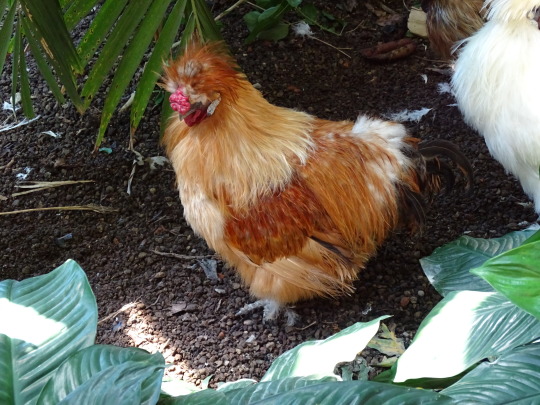


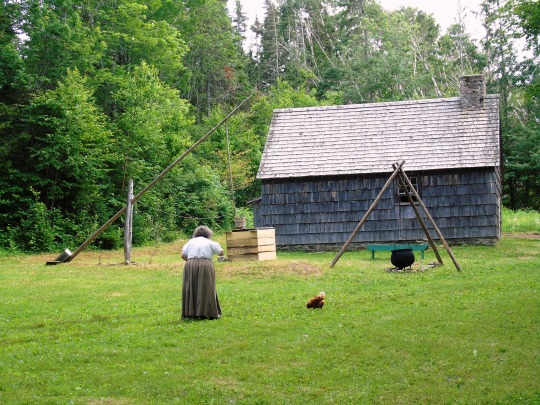


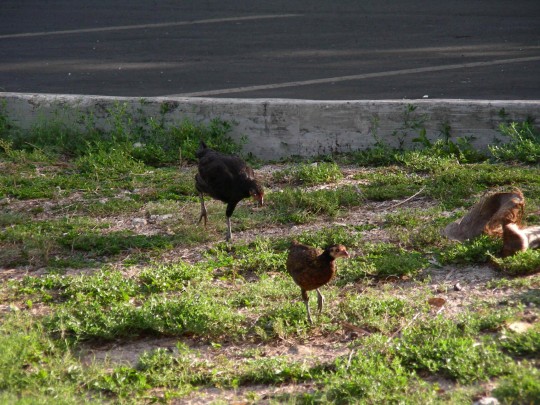



International Respect for Chickens Day exists "to celebrate chickens throughout the world and protest the bleakness of their lives in farming operations." On the day, actions are to be done "to highlight the life and suffering of chickens and encourage compassion for them." The day was started by the United Poultry Concerns in 2005. Karen Davis, the founder of the group, believes that chickens should be returned to an outside environment and that they shouldn't be eaten. The idea for the day stemmed from Harry Shearer—the host of Le Show and Simpsons voice contributor—who had proclaimed May 14, 2000, as National Respect the Chicken Day. It was Mother's Day, and he wanted to point out that hens are symbols of devoted motherhood.
Chickens are the most prevalent bird species; there are about 25 billion in the world. There are also dozens of breeds. The chicken is a subspecies of, and largely descended from, the red junglefowl, which is native to Asia. To a lesser extent, the chicken can also trace its lineage to the grey junglefowl. A baby chicken is a chick, young female chickens are pullets, female chickens old enough to lay eggs are hens, young male chickens are called cockerels, and full-grown male chickens are called cocks or roosters.
Chickens are likely domesticated more than any other fowl and are raised for both their meat and eggs. First domesticated in India and Southeast Asia, they were used in cockfights and for religious reasons, not for food. They began appearing on farms a few thousand years ago, but it wasn't until the early twentieth century that they began being viewed differently, and eggs and meat became mass-produced commodities. High-volume poultry farms began appearing in Britain around 1920 and in America following World War II.
Hens and pullets are raised for meat and eggs. At first, eggs were the main focus, and only hens that couldn't produce any more eggs were killed for food; now female chickens of any age are killed for meat. Males are used for breeding, but some young males—cockerels—are castrated (often chemically) and used for food; they are then known as capons. In the mid-twentieth century, meat surpassed eggs as the primary use of chickens. The meat industry has since continued to grow. Chicken meat is often used as pet food as well as for human consumption.
Chickens themselves are omnivores; they eat seeds, but also eat insects, lizards, and mice. When food is present, roosters may do some tidbitting: they make food calls and move their heads up and down while picking up and dropping pieces of the food. Research has shown that hens prefer roosters who do tidbitting more often. Groups of chickens create a social hierarchy. There is usually a dominant male, a few less-dominant males, and a few females. A pecking order is formed, and higher ranking males may strike out against lower ranking males, literally pecking them with their beaks. There is a pecking order with females as well.
Hens may mate with many different roosters. Interestingly, they may eject sperm and are more likely to do so if the rooster is lower on the pecking order. Chickens breed in the spring and summer months when the longer daylight hours stimulate egg-laying. Artificial lighting in chicken coops can influence hens to lay eggs year-round. The time between ovulation and egg-laying is between 23 and 26 hours, and chickens can ovulate an hour after laying an egg. So, it is possible for some hens to lay about 300 eggs a year. Chicks hatch about 21 days after eggs are laid. Free-range chickens may live up to six to eight years, while most chickens in the poultry industry only live two to three years—they lay eggs for a few years and are then slaughtered. The longest a chicken may live is about 30 years.
How to Observe
According to United Poultry Concerns, an "action" of compassion is to be done for chickens today. Posters, as well as brochures and handouts, can be acquired from United Poultry Concerns, and they suggest the following ideas on how to celebrate the day:
Hand out leaflets on a street corner.
Set up a table with information about chickens somewhere in public.
Have an office party dedicated to the topic.
Have a celebration of chickens in a classroom.
Write a letter to the editor of a local publication.
Call in to a radio program.
Host a vegan open house.
Talk to friends, family members, and strangers about what can be done to help chickens.
Some other ideas on how to celebrate the day could include:
Watch a documentary such as Food, Inc. or Dirty Birds: A Story of Chickens in America.
Watch Chicken Run.
Read about the different breeds of chickens.
Read a book about the chicken industry such as Big Chicken: The Incredible Story of How Antibiotics Created Modern Agriculture and Changed the Way the World Eats or Chicken: The Dangerous Transformation of America's Favorite Food.
Read Prisoned Chickens Poisoned Eggs: An Inside Look at the Modern Poultry Industry, a book by Karen Davis, the founder of United Poultry Concerns.
Join United Poultry Concerns.
Source
#Silkie#International Respect for Chickens Day#4 May#Zoo Zurich#animal#bird#InternationalRespectForChickensDay#daytrip#original photography#Brahma chicken#Switzerland#Zürich#Key West Chicken#Florida#wildlife#flora#fauna#USA#Kings Landing Historical Settlement#Canada#travel#vacation#feather#New Brunswick#spring 2018#2017#2015
1 note
·
View note
Photo
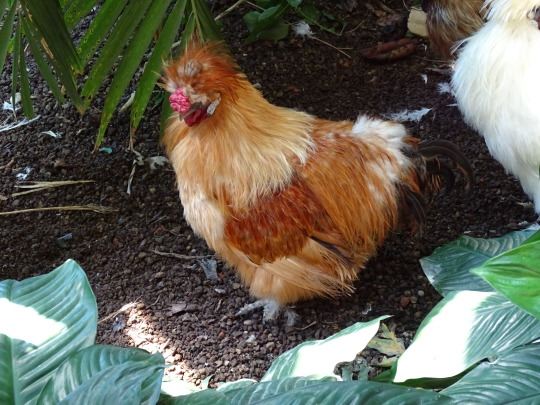
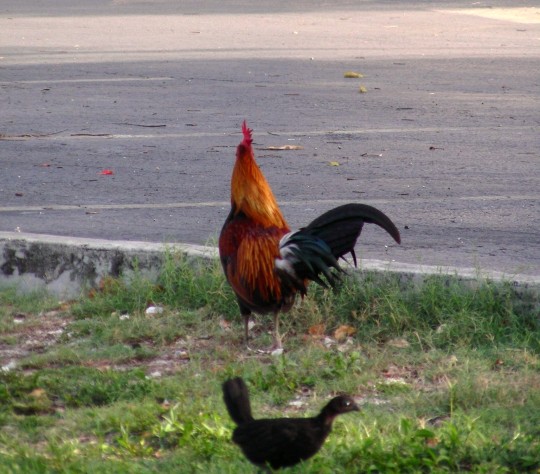

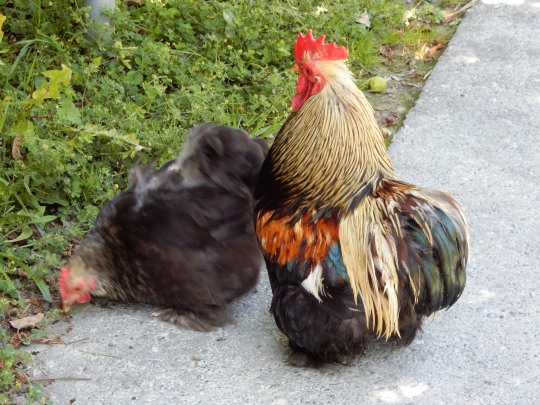






International Respect for Chickens Day
International Respect for Chickens Day exists “to celebrate chickens throughout the world and protest the bleakness of their lives in farming operations.” On the day, actions are to be done “to highlight the life and suffering of chickens and encourage compassion for them.” The day was started by the United Poultry Concerns in 2005. Karen Davis, the founder of the group, believes that chickens should be returned to an outside environment and that they shouldn’t be eaten. The idea for the day stemmed from Harry Shearer—the host of Le Show and Simpsons voice contributor—who had proclaimed May 14, 2000, as National Respect the Chicken Day. It was Mother’s Day, and he wanted to point out that hens are symbols of devoted motherhood.
Chickens are the most prevalent bird species; there are about 25 billion in the world. There are also dozens of breeds. The chicken is a subspecies of, and largely descended from, the red junglefowl, which is native to Asia. To a lesser extent, the chicken can also trace its lineage to the grey junglefowl. A baby chicken is a chick, young female chickens are pullets, female chickens old enough to lay eggs are hens, young male chickens are called cockerels, and full-grown male chickens are called cocks or roosters.
Chickens are likely domesticated more than any other fowl and are raised for both their meat and eggs. First domesticated in India and Southeast Asia, they were used in cockfights and for religious reasons, not for food. They began appearing on farms a few thousand years ago, but it wasn’t until the early twentieth century that they began being viewed differently, and eggs and meat became mass-produced commodities. High-volume poultry farms began appearing in Britain around 1920 and in America following World War II.
Hens and pullets are raised for meat and eggs. At first, eggs were the main focus, and only hens that couldn’t produce any more eggs were killed for food; now female chickens of any age are killed for meat. Males are used for breeding, but some young males—cockerels—are castrated (often chemically) and used for food; they are then known as capons. In the mid-twentieth century, meat surpassed eggs as the primary use of chickens. The meat industry has since continued to grow. Chicken meat is often used as pet food as well as for human consumption.
Chickens themselves are omnivores; they eat seeds, but also eat insects, lizards, and mice. When food is present, roosters may do some tidbitting: they make food calls and move their heads up and down while picking up and dropping pieces of the food. Research has shown that hens prefer roosters who do tidbitting more often. Groups of chickens create a social hierarchy. There is usually a dominant male, a few less-dominant males, and a few females. A pecking order is formed, and higher ranking males may strike out against lower ranking males, literally pecking them with their beaks. There is a pecking order with females as well.
Hens may mate with many different roosters. Interestingly, they may eject sperm and are more likely to do so if the rooster is lower on the pecking order. Chickens breed in the spring and summer months when the longer daylight hours stimulate egg-laying. Artificial lighting in chicken coops can influence hens to lay eggs year-round. The time between ovulation and egg-laying is between 23 and 26 hours, and chickens can ovulate an hour after laying an egg. So, it is possible for some hens to lay about 300 eggs a year. Chicks hatch about 21 days after eggs are laid. Free-range chickens may live up to six to eight years, while most chickens in the poultry industry only live two to three years—they lay eggs for a few years and are then slaughtered. The longest a chicken may live is about 30 years.
How to Observe
According to United Poultry Concerns, an “action” of compassion is to be done for chickens today. Posters, as well as brochures and handouts, can be acquired from United Poultry Concerns, and they suggest the following ideas on how to celebrate the day:
Hand out leaflets on a street corner.
Set up a table with information about chickens somewhere in public.
Have an office party dedicated to the topic.
Have a celebration of chickens in a classroom.
Write a letter to the editor of a local publication.
Call in to a radio program.
Host a vegan open house.
Talk to friends, family members, and strangers about what can be done to help chickens.
Some other ideas on how to celebrate the day could include:
Watch a documentary such as Food, Inc. or Dirty Birds: A Story of Chickens in America.
Watch Chicken Run.
Read about the different breeds of chickens.
Read a book about the chicken industry such as Big Chicken: The Incredible Story of How Antibiotics Created Modern Agriculture and Changed the Way the World Eats or Chicken: The Dangerous Transformation of America’s Favorite Food.
Read Prisoned Chickens Poisoned Eggs: An Inside Look at the Modern Poultry Industry, a book by Karen Davis, the founder of United Poultry Concerns.
Join United Poultry Concerns.
Source
#International Respect for Chickens Day#InternationalRespectForChickensDay#Kings Landing Historical Settlement#Canada#flora#fauna#animal#USA#Key West#Key West Chicken#Brahma chicken#Zoo Zürich#Zurich#travel#day trip#original photography#Schweiz#Switzerland#Silkie#rooster#tourist attraction#vacation#4 May
1 note
·
View note
Text
It’s #InternationalRespectForChickensDay 🐓 so here some roosters from the The Walters Art Museum’s Arts Across Asia exhibition!



Namikawa Sosuke (1847-1910) Vase with Rooster, Hen, and Chicks among Banana Plants Japan (Tokyo), early 20th century copper, gold-copper alloy (shakudö), silver, gold, enamel Walters Art Museum
“Beginning in the 1880s, Japanese cloisonné artists developed wireless cloisonné (musen shippo), a technique for which Namikawa Sosuke was renowned. This vase shows no traces of the metal wires that initially outlined the animals and plants. The effect was achieved by taking off the metal wires before each of the three firings, resulting in a cloisonné design that the artist intended to look like a painting.”


Kutani Shozo (1816-1883) Kutani: Dish with Roosters Under Cherry Tree Japan, c. 1876 porcelain, overglaze enamel, gilding Walters Art Museum
“By the second half of the 19th century, Kutani ceramics, such as this dish, began to be exported. The Kutani style of this period is marked by a heavy reliance on red and the use of gold, an opulent effect that undoubtedly appealed to foreign tastes.”
#Walters Art Museum#exhbition#museum visit#Arts Across Asia#Japanese art#Asian art#chicken#rooster#hen#chick#bird#birds#birds in art#ceramics#porcelain#cloisonné#19th century art#20th century art#animals in art#animal holiday#International Respect for Chickens Day
22 notes
·
View notes